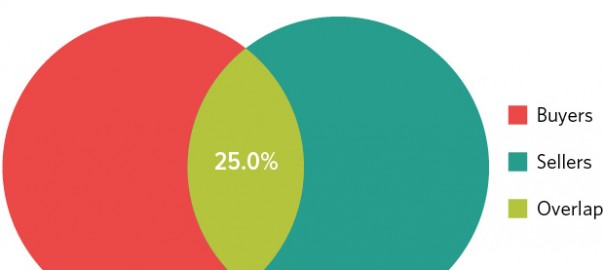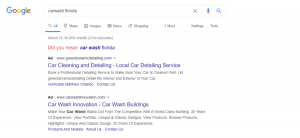In a recent post, we established that having true, relevant, and provable differentiators will help your firm take the lead in the marketplace. But whom do you need to differentiate your firm from? While there are multiple components to a successful branding research endeavor, today we are going to focus on the importance of identifying your firm’s competitive landscape.
There are all sorts of nooks, crannies and niches in the marketplace that professional services firms stake out and claim as their own. These firms can range anywhere from individuals to boutique firms to industry juggernauts, and anywhere in between. Whether you are aware of them or not, they are still out there competing for your business. This is why conducting research on your target audience is a logical first step in making sure your competitive advantage is relevant, provable, and true.
What is Competitive Analysis?
Competitive analysis lives under the market research umbrella. It plays an important role in your firm’s marketing strategy by enabling your firm to establish what makes your services unique. Through identifying this differentiation, your marketing team can then tailor messages that reflect your firm’s unique qualities to attract your target audience.
Collecting the data used in competitive analysis is best obtained through multiple vantage points, specifically through the eyes of your clients and prospects. Tapping into their perspectives as buyers provides clarity into an otherwise murky competitive landscape. After comparing internally identified competitors to those identified by your clients and prospects, the disconnect might surprise you. After all, competition is relative to the perception of your firm’s target audience.
Because your target audience is making a decision on which firm they want to give their business too, they have the luxury of shopping around. Your firm is not only competing against known competition, but also “hidden” competitors, or individuals or firms that can satisfy the needs of your target audience without offering services similar to those provided by your firm.
When one thinks of a competitor in the traditional sense, it’s typically based on the services that the firm in question offers and who those services are tailored for. However, with the rise of the Internet, social media, and content marketing, firms are now competing not only around similar services, but are also competing for thought leadership space. Even if a thought leader doesn’t offer services that directly compete with your firm, their clout in the marketplace has the power to influence buyers.
We’ve conducted research on over 8,000 buyers and sellers of professional services. In particular, a big part of our Branding Program involves a competitive analysis to establish market positioning for our clients. Through this research, we’ve been able to establish industry trends and benchmarks to help professional services navigate a successful marketing strategy and improve their market position.
The average professional services firm is aware of only 1 out of every 4 competitors.

In other words, about 75% of the average professional services firm’s competition is flying under the radar. This sobering statistic accentuates the fact that buyers of professional services have access to more information now than ever before. The playing field has been leveled. So, naturally, it’s important to be aware of your firm’s competitive landscape in order to effectively educate, differentiate, and negotiate.
Why do so many professional services firms have such a loose grasp on their competitors?
The short answer is simple. Research on your firm’s target audience is needed to bring awareness to the competitive landscape. In our book, Inside the Buyer’s Brain, we’ve noticed that firms with high growth and high profits conduct regular research on their target clients. As you can see in the following figure, firms that do frequent research (at least once per quarter) on target clients outperform firms that do occasional research (less than once per quarter) or none at all.

The key here is the frequency at which research is conducted. This goes hand-in-hand with the readily available information and the ease of access I mentioned earlier. Content that was created (June 21, 2015) is old today, and could be irrelevant a week from now. The same concept applies to your competition. It is import to conduct competitive analysis and refresh your competitive radar often. Firms or experts that you are competing against today may not be relevant players in the near future.
In the end, conducting research and keeping up with industry trends may seem like a cumbersome endeavor, but it is certainly worth its weight in gold. In addition to the growth and profitability benefits, the ability to keep tabs on emerging competitors in the marketplace is invaluable and important to adjusting your position in the marketplace.
Additional Resources
- Download a complimentary copy of Hinge’s Professional Services Guide to Research.
- Discuss the best ways to conduct a competitive analysis with other executives and marketers in our LinkedIn group, the Professional Services Executive Forum
(225)
Report Post







